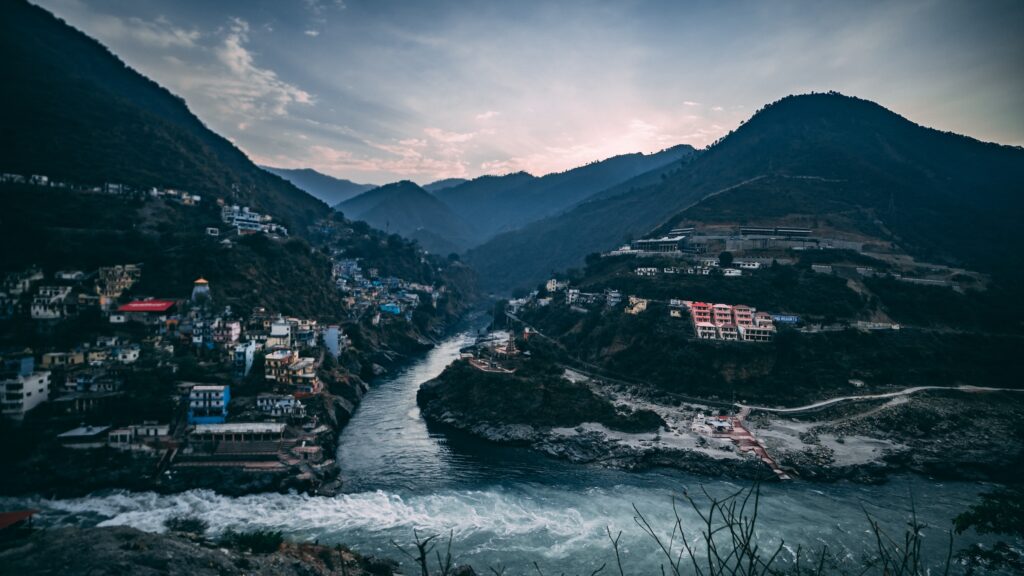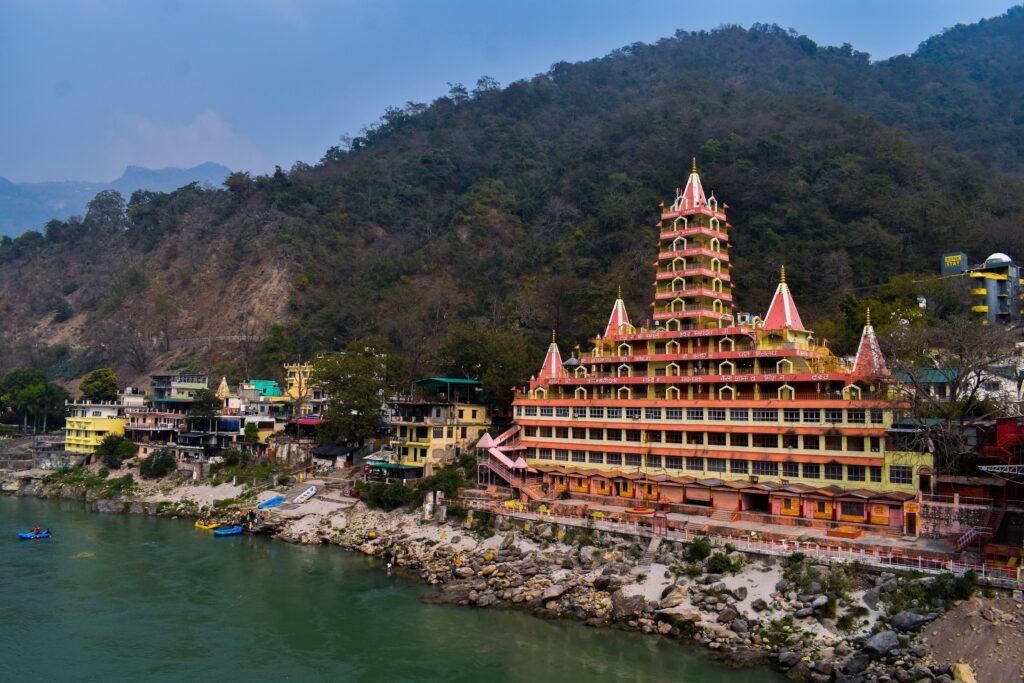Discover the greatness of the sacred Ganga River in India, its historical significance, religious importance, and environmental challenges. Explore its impact on the Indian economy and untapped hydropower potential in this comprehensive article.

The River Ganga, renowned as the Ganga, transcends its identity as a mere watercourse; it symbolizes life, spirituality, and sustenance for millions of people. Spanning over an impressive 2,500 kilometers, it proudly claims its position as one of Asia’s lengthiest and most significant rivers. Gracefully flowing through the Indian states of Uttarakhand, Uttar Pradesh, Bihar, and West Bengal, it weaves its way into the heart of Bangladesh before merging with the vastness of the Bay of Bengal. Its eminence in Indian culture and history is unrivaled, as it plays an indispensable role in the lives of those who reside along its hallowed banks and beyond.
The Ganga has ingrained itself deeply into the collective consciousness of India, revered as a sacred entity that cleanses not just the physical body but also the soul. Pilgrims and devotees flock to its shores seeking spiritual enlightenment and liberation from the cycle of birth and death. Its waters are believed to possess divine powers, and the ashes of the departed are often immersed in its currents as an act of final liberation.
Moreover, the Ganga has historically been a cradle of civilization, witnessing the rise and fall of ancient kingdoms and acting as a vital trade route that facilitated cultural exchange and economic growth. The river’s fertile banks have nurtured countless generations, supporting agriculture and livelihoods for millions.
In this article, we will explore the greatness of the Ganga River, unearthing its historical, cultural, and religious importance from various angles, to gain a deeper appreciation for the profound impact it has had on the lives of people throughout the ages.
The Sacred Lifeline
The Ganga, often hailed as the “lifeline of India,” is a river of immense significance to the country’s socio-economic and ecological fabric. Its vital waters support the livelihoods of millions, residing in the densely populated river basin. The river’s waters are instrumental for agricultural activities, enabling the growth of crops that sustain the nation’s food security. Fishing along its banks provides a crucial source of income and sustenance for many communities.
Moreover, the fertile alluvial plains that stretch along its course have fostered thriving civilizations for centuries, giving rise to some of the world’s oldest and most culturally rich societies. The Ganga not only nourishes the bodies of its people but also nourishes their souls, as its spiritual and religious importance makes it a revered symbol in the hearts of millions, transcending its role as just a geographical feature.
List of Cities/Towns on the Bank of Ganga River
Below is a table listing the places through which the Ganga River passes:
| State | Cities/Towns along the Ganga River |
| Uttarakhand | Gaumukh, Gangotri, Uttarkashi, Haridwar |
| Uttar Pradesh | Kanpur, Allahabad (Prayagraj), Varanasi (Benaras) |
| Bihar | Patna, Bhagalpur, Munger, Buxar |
| West Bengal | Murshidabad, Kolkata |
| Bangladesh | Rajshahi, Faridpur, Khulna, Barishal, Chandpur |
| Bay of Bengal | – |
Spiritual and Religious Significance

The Ganga river holds profound religious significance in Hinduism, being venerated as the most sacred river in the religion. Its divine waters are believed to possess the power to purify one’s soul, absolving it of all sins and facilitating spiritual emancipation. For devout Hindus, a sacred dip in the holy river is not just a customary act, but a deeply spiritual experience that signifies the washing away of impurities and seeking blessings for a better life ahead.
Throughout the year, but especially during religious festivals, thousands of pilgrims flock from all corners of India and beyond to congregate at the revered ghats of cities like Haridwar, Varanasi, and Allahabad. These ghats, the riverfront steps, become a confluence of faith and devotion as people perform elaborate rituals, chant hymns, and set afloat diyas (earthen lamps) on the river’s surface as offerings to the divine.
Furthermore, the Ganga is believed to be intricately linked to the cycle of life and death. It is a common belief that immersing the ashes of departed loved ones in its sacred waters will liberate their souls from the eternal cycle of rebirth, leading to ultimate salvation or moksha.
The spiritual aura of the Ganga goes beyond just the physical realm; it carries a deep-rooted emotional connection ingrained in the hearts of Hindus for generations. The river is not merely water; it symbolizes the embodiment of purity, divinity, and eternity. Its significance extends to various aspects of daily life, art, culture, and literature, making it an inseparable part of India’s cultural identity.
Despite its spiritual prominence, the Ganga faces numerous challenges, such as pollution and over-extraction of water, which pose threats to its sanctity and the well-being of millions who depend on its waters. Recognizing its cultural and religious importance, there have been efforts to restore and conserve the river’s ecological health, but more comprehensive and sustained measures are required to preserve the Ganga river for future generations and to continue honoring its spiritual significance.
Historical Importance

The Ganga holds profound historical importance as the cradle of ancient civilizations and lifeline of historical cities and kingdoms. Prominent capitals like Pataliputra (modern-day Patna), Kannauj, and Varanasi thrived on its banks. Pataliputra was the capital of the Maurya Empire, witnessing great advancements under Emperor Ashoka. Kannauj, known for opulence and trade, was part of the famed “Kannauj Triangle.” Varanasi, among the world’s oldest continuously inhabited cities, has been a symbol of wisdom and spirituality.
The Ganga and its tributaries facilitated trade and cultural exchange, contributing to the growth of these cities and influencing their prosperity. The fertile alluvial plains sustained agriculture and livelihoods, shaping a diverse society. Throughout history, the Ganga river has witnessed the rise and fall of empires, the confluence of cultures, and the evolution of civilization. As a historical witness, it continues to inspire reverence and awe, honoring its past while sustaining the present and promising an enduring legacy.
The Source of Inspiration
The Ganga holds immense ecological significance as well, supporting a rich and diverse ecosystem that sustains various plant and animal species. The river basin is a habitat for numerous aquatic creatures, including the iconic Ganga River Dolphin, Indian Gharial, and various species of fish. Additionally, the wetlands and marshes around the river provide nesting and feeding grounds for migratory birds, making it an essential avian habitat.
However, the Ganga also faces environmental challenges. Pollution from industrial waste, agricultural runoff, and untreated sewage poses a severe threat to its waters and the creatures that depend on it. Efforts to clean and rejuvenate the river, such as the “Namami Gange” mission launched by the Indian government, aim to address these issues and restore the Ganga river to its former glory.
Preserving the ecological health of the Ganga river is not only crucial for the well-being of the people who rely on it but also for maintaining the delicate balance of the ecosystem it supports. Through sustainable practices and collective action, the Ganga can continue to thrive as a lifeline for both nature and civilization.
Cultural Practices and Festivals

The Ganga River, often referred to as the “lifeline of India,” is deeply intertwined with the country’s cultural and spiritual heritage. It sustains the lives of millions of people and supports diverse ecosystems, making it vital for agriculture, fishing, and livelihoods. The river’s fertile alluvial plains have nurtured civilizations for centuries, giving rise to some of the world’s oldest and most sophisticated cultures.
In Hinduism, the Ganga holds immense religious significance. It is considered the most sacred river, believed to cleanse one’s soul of all sins and lead to spiritual liberation. Pilgrims from all over India and beyond visit its holy ghats to perform rituals and immerse the ashes of their loved ones, seeking moksha.
The Ganga river has also played a pivotal role in shaping India’s history. Ancient capitals were established along its banks, facilitating trade, cultural exchange, and urban growth. It continues to inspire artists, writers, and philosophers, reflecting its profound influence on Indian culture.
Furthermore, various cultural practices and festivals revolve around the Ganga river, with the Kumbh Mela being the most prominent. This mass Hindu pilgrimage attracts millions of devotees who seek purification by bathing in its sacred waters during this auspicious occasion, showcasing the river’s enduring cultural significance.
Environmental Concerns
The Ganga, often referred to as the “lifeline of India,” faces significant environmental challenges that jeopardize its existence. Pollution from industrial discharges, untreated sewage, and agricultural runoff has severely deteriorated its water quality. This iconic river, which holds immense cultural and spiritual importance, is now classified as one of the world’s most polluted water bodies.
In response to this crisis, the Indian government initiated the “Namami Gange” program to restore and sustainably manage the Ganga. However, despite efforts, more comprehensive and persistent actions are needed to address the root causes of pollution and degradation. It requires active participation from industries, communities, NGOs, and individuals to enforce environmental regulations, promote sustainable practices, and raise awareness about the Ganga’ significance.
Reviving the Ganga demands a holistic approach that integrates ecological restoration, afforestation, and responsible water management. By safeguarding the Ganga river, India can preserve its cultural heritage, protect millions of livelihoods, and ensure a healthier and sustainable future for generations to come.
Ecological Importance of the Ganga River
The Ganga River, often referred to as the “lifeline of India,” holds immense cultural, religious, and historical significance. It sustains the lives of millions of people and supports a diverse range of ecosystems. The river’s fertile alluvial plains have nurtured civilizations for centuries, giving rise to some of the world’s oldest cultures.
In Hinduism, the Ganga is deeply revered and considered the most sacred river. Pilgrims from across India and beyond visit its holy ghats to perform religious rituals and seek spiritual liberation. The Ganga has been the cradle of ancient civilizations, with several historical cities established on its banks, fostering trade and cultural exchange.
Throughout history, the Ganga river has inspired poets, writers, artists, and philosophers, reflected in numerous literary works and paintings. Cultural practices and festivals, like the Kumbh Mela, are centered around the river. Despite its greatness, the Ganga faces environmental challenges, demanding sustained efforts for its restoration and conservation.

Impact on the Indian Economy
The Ganga River holds immense economic importance for India. It serves as a vital waterway, facilitating the transportation of goods and people across various regions. This efficient mode of transport helps in the movement of commodities, fostering trade and commerce.
Moreover, the fertile alluvial plains along the Ganga support agriculture, one of the main pillars of India’s economy. The river provides essential irrigation water for crops, enabling farmers to cultivate a variety of crops throughout the year. This agricultural productivity not only supports the livelihoods of millions of farmers but also contributes to the country’s overall food security.
In essence, the Ganga River’s economic impact extends to trade, transportation, and agriculture, making it an integral part of India’s economic growth and development. Preserving and sustainably managing the river’s resources are crucial to ensuring the continued prosperity and well-being of the nation.
Hydropower Potential
The Ganga River and its tributaries offer a significant untapped hydropower potential that could play a vital role in meeting India’s increasing energy needs. Developing hydropower projects along the river has the advantage of providing clean and renewable energy, reducing the nation’s dependence on fossil fuels and mitigating greenhouse gas emissions.
However, it is essential to approach hydropower development with careful consideration for the environment and local communities. Large-scale dam constructions can lead to ecological disruptions, alter river flow patterns, and impact aquatic biodiversity. Additionally, such projects may involve displacing communities residing in the project areas.
Therefore, striking a balance between harnessing the hydropower potential and ensuring sustainable environmental and social practices is crucial. Responsible planning, thorough environmental impact assessments, and community engagement are vital aspects of realizing the hydropower potential of the Ganga while preserving its delicate ecosystems and supporting the well-being of the people who depend on the river.
Conclusion
The Ganga River is not just a water body but an integral part of India’s cultural, historical, and spiritual identity. Its greatness lies in the profound impact it has on the lives of millions of people, its role in shaping civilizations, and its status as a sacred symbol of purification and liberation in Hinduism. However, the river also faces numerous challenges, and concerted efforts are required to preserve and restore its ecological health. The Ganga remains a testament to the enduring bond between nature and human civilization, and its protection is crucial for the future well-being of India and its people.
Keep visiting The Ganga Times for such beautiful articles. Follow us on Facebook, Twitter, Instagram, and Koo for regular updates.
